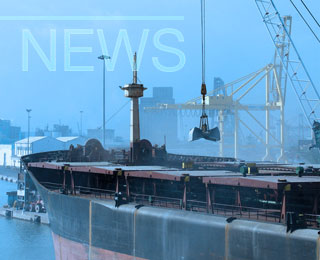While the Cape-size sector offered a degree of comfort to owners in early December, especially with the Baltic Capesize index posting some useful gains, this shift has not as yet translated into any positive upward rate improvements for the rest of the dry bulk sector. Panamaxes are still suffering hefty losses with brokers noting that the Panamax index now stands at around the low 450 level, even below that of the smaller size Supramax.
The rise of the corresponding Cape index was triggered by news that iron-ore price settlements could be pushed through earlier, which would then prompt steel makers to increase their imports. Brokers suggest that the big three iron ore producers: Vale, BHP and Rio Tinto could be forced to set prices sooner than planned and, as a result, this would re-invigorate sales. Without such a stimulus buyers might opt to hold off from further purchases until April-09, the traditional time for contract negotiations.
Paris-based broker Barry Rogliano Salles’ (BRS) latest report on the dry bulk market notes that Cape-sized rates from Australia to China are now in the order of US$4/t. Meanwhile, in the Panamax segment both transatlantic and transpacific round voyages now stand close to a new low of US$3000 per day, with little change on the horizon although some would suggest that the market has now bottomed out.
The Handy market remains depressed, although the rates appear low enough to be termed ‘rock bottom’ notes Barry Rogliano. The reality is that there is no bottom, at least not quite yet. Oversupply is still obvious in all the main loading areas and despite pockets of activity, for example iron ore cargoes from India to China, unemployment levels remain high. For Handysizes, time charter rates being reported in the mid-to-high US$4,000s/day for a trans-Atlantic RV (TARV) and just US$3000 for a Pacific RV (PARV).
For Supramaxes, the levels are mid-to high US$6000s for a TARV and low US$5000s for a PARV. The period market is however still very thin with little real activity being reported, say brokers.
Published under Cement News


